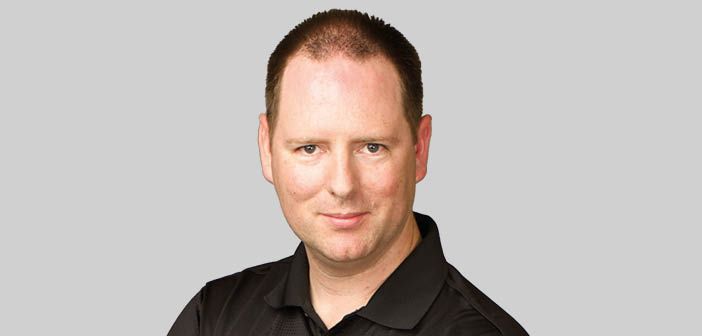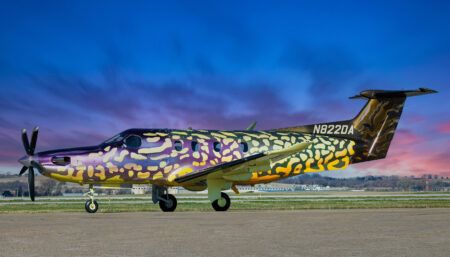Ken Bantoft, vice president of satcom technologies and development at Satcom Direct, explains some of the intricacies of satcom
What ways are there to provide connectivity to aircraft?
The traditional global standard is satellite communications (satcom). This depends on a satellite in space. The signal goes between your aircraft and the satellite to the ground.
Another method is air-to-ground (ATG) technology. Typically that entails using antennas on the bottom of the aircraft that point down toward towers on the ground that point up. ATG is only useful over land; it doesn’t work over water because there is nowhere to put the towers.
So, ATG is limited geographically and also typically as you get into altitudes below 10,000ft, where it doesn’t work because there are buildings, hills and other obstructions.
There are definitely challenges with ATG, which is one of the reasons why satcom is now the global standard – because it works everywhere the aircraft flies.
What technical challenges are there in providing a satcom service?
The primary one is bandwidth and how it affects speed. Speed is a factor of which technology you’re using – L-band, Ku-band or Ka-band – as they have different frequencies, from L-band at 1.6GB to Ka-band at 30-60GHz, which determine how much throughput you can get.
Another factor is the size of the antenna on the aircraft. When you’ve got a BBJ, you can put a huge 30in-long fuselage-mounted antenna on the aircraft, so the performance will be greater than on a smaller aircraft with an 11.5in, mechanically steered dish on the tail. These are the two primary elements from a technology standpoint – what frequency you’re running and how big your antenna is.
You need to factor in the fact that the both the aircraft and the spacecraft have limitations in terms of power and frequency, and you need to synchronize those to gain the best performance.
How do you optimize voice quality?
Quality of Service (QoS) mechanisms differentiate traffic on an IP network, designating one stream of data as more important than another stream. There are various technologies for doing this; some are inherent in the actual satellite network, for instance Inmarsat built in the Radio Access Network (RAN).
There is a QoS mechanism that enables me to reserve a dedicated stream for communications and I can say to the network this will be a voice call, therefore I want a certain number of kilobits of data, bandwidth, and I want the best possible latency.
With our new Global VT service, in conjunction with our SDR router, we communicate with the network providers where possible and allocate that reserve set of bandwidth, so customers get the best-possible call quality, rather than having to fight with the guy next to them who’s downloading email.
QoS features are inherent in most of the networks. With Inmarsat we do something similar; we mark our traffic to differentiate it from the other traffic on the network. That’s how to get the highest quality possible over a shared network or a tended network service.
What is data aggregation?
Each channel off the aircraft has its own characteristics, IP address and connection. When you’re trying to send a stream of data through one you can only use the maximum bandwidth of that channel. Bonding and aggregation enable you to take two channels that are normally separate, and merge them into a virtual connection that has the characteristics (including bandwidth) of both combined. That’s how we can increase performance to and from the aircraft, by aggregating two or more channels into a virtual connection.
How challenging is it to work with such an array of hardware and service providers?
We’re Switzerland – we play in the middle, we work with all the providers, and end up supporting a lot of their hardware. Think, for instance, of your cell phone provider. Who do you call when you have a problem with your phone? You don’t call Apple, Samsung or Microsoft; you call the service provider, even though the problem might be with your phone, rather than the reception.
Customers typically call us first, so we have inevitably learnt how to troubleshoot and prove whether it is an issue with the service, hardware or coverage. As a result we’ve built a lot of tools and technologies that help us work with the hardware manufacturers. Over the years we’ve built a lot of mutual respect with the hardware manufacturers; we’ve built really strong working relationships to give the customer the service they want.
What are the main customer demands?
Everybody is using more and smaller devices. Three to five years ago, when you got on a business aircraft, you took out your laptop, you had one device. Now you get on a business aircraft and you’ve got a laptop, a tablet and a phone – the number of devices per passenger has basically tripled. How many phones do you have? Probably two. You’ve got a tablet and a laptop and soon you’re going to have a smart watch, then you’re going to have a smart fitness band and activity monitor. All of these things communicate using wi-fi.
So, as you have more devices you need more bandwidth, or you need to manage what you already have better. This is where blocking specific traffic is useful. Do you want the Apple iTunes store downloading its updates over your satellite link? No, so we offer customers a solution that will allow them to block software updates, streaming video and certain organization services. It is about doing more with the same.
Is security and privacy a growing concern?
Yes, security is now being brought to the forefront in the business aviation community. This is not just as a result of the credit card hacks that you see in the news; it’s really come to the forefront with deep hacks like what happened to Sony in 2014. People are realizing this could happen to them and are looking to prevent it. A lot of companies are investing a lot in security, including in corporate aircraft. That trend is here to stay.
We offer some specific security services to our customers for information assurance. Our SDR router has been penetration tested and signed off by an external group of consultants. We’re going to offer some additional security services over the next couple of months.
What’s new for 2015?
Global VT is the big launch for 2015. It is huge news for two reasons. Number one, you get to use your device and your own phone number. Number two, it works anywhere in the world. We’re not limited by altitude or coverage, we work with all the major satellite networks out there and give passengers the ability to make that call, to not miss the moment. You can make and receive calls and texts just like you do on the ground. People get your caller display and they know who’s calling. When they call you they don’t know you’re on the aircraft because it doesn’t matter anymore – you can answer that call, talk to them, get your business done, and then get on with it.





